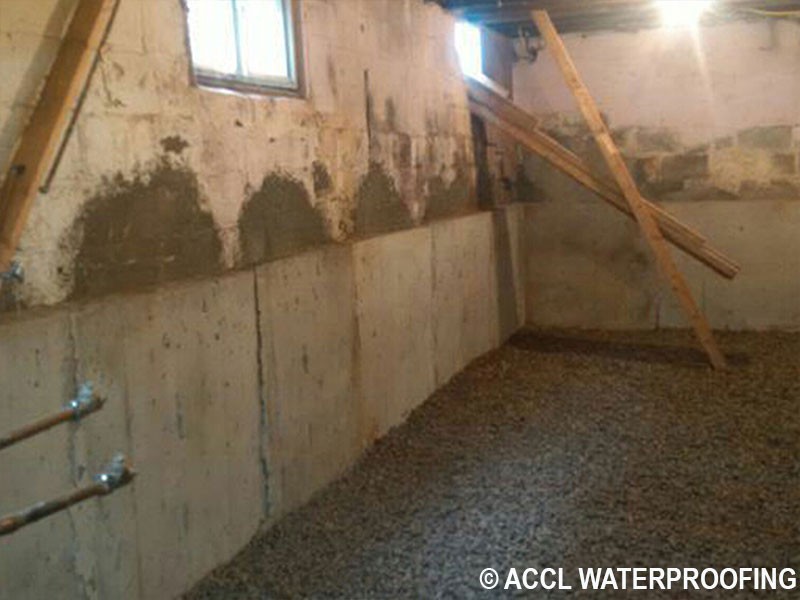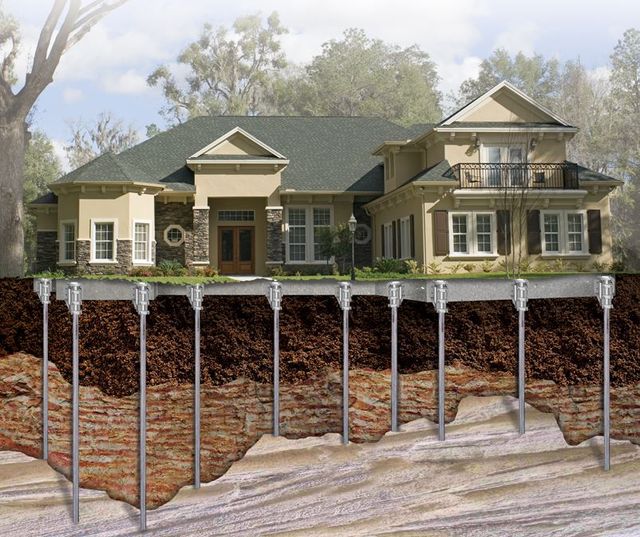Experience Deluxe Living: Walkout Basement Toronto Options Await
Experience Deluxe Living: Walkout Basement Toronto Options Await
Blog Article
Whatever You Required to Learn About Cellar Underpinning for a Stronger Home
Cellar foundation is an important process that can significantly enhance the architectural honesty of a home. Whether you are taking into consideration refurbishing your cellar or have observed indicators of foundation concerns, understanding the ins and outs of base is important.
Advantages of Basement Foundation
Basement foundation offers significant structural reinforcement and enhanced stability to homes, guaranteeing long-term security and toughness. One of the key advantages of cellar foundation is the capacity to strengthen the foundation of a residential property, especially in instances where the existing structure is deteriorated or endangered. By expanding the depth or width of the foundation, underpinning distributes the weight of the structure a lot more efficiently, lowering the risk of negotiation or structural failing gradually.
In addition, cellar underpinning can create added home or enable for the construction of a cellar in residential or commercial properties that do not currently have one. This can dramatically boost the value of the home and supply even more practical space for the house owners. Additionally, base can aid protect against water infiltration and enhance the total energy effectiveness of the property by sealing splits and gaps in the foundation.
Indications You Required Underpinning
Offered the structural reinforcement and stability advantages that basement support gives, it is crucial to be familiar with specific indications that might signal the requirement for this fundamental fortifying technique. One typical indication that your home may need base is the existence of fractures in the wall surfaces, specifically if they are diagonal or wider than a quarter of an inch. Furthermore, doors or home windows that are sticking or no more closing correctly could show a moving structure that needs base. Irregular or sloping floors, specifically in older homes, may likewise suggest foundational problems that underpinning can attend to effectively. If you see voids between the walls and the ceiling or between the walls and the flooring, maybe a sign of structure negotiation, triggering the demand for base. Lastly, any type of noticeable indications of moisture or water damage in the cellar can be an indicator of an endangered foundation that requires underpinning to stop additional architectural damage. Regularly inspecting your home for these signs can help you identify the requirement for underpinning beforehand, making sure the structural integrity of your home.
Refine of Underpinning

To launch the procedure of foundation, a comprehensive analysis of the existing foundation's condition is performed by certified architectural designers. This evaluation includes checking the architectural stability of the structure, recognizing any indications of distress or weak point, and identifying the appropriate base method to reinforce the structure. When the analysis is total and foundation is regarded needed, the underpinning procedure normally starts with digging deep into sections of the existing structure in a critical way. This excavation enables the installation of additional assistance, such as concrete or steel beams, below the structure to improve its stability and load-bearing capability.
After the support group remains in place, the next step involves progressively filling up the excavated areas with high-strength cement to secure the new foundation assistance ready. Throughout the underpinning procedure, careful surveillance and adjustments are made to guarantee that the foundation is effectively enhanced and that the architectural integrity of the building is maintained. By complying with a systematic technique and sticking to industry finest practices, underpinning can properly strengthen the structure of a home and mitigate architectural problems.
Expense Considerations
Considering the financial effects of underpinning a cellar is essential for property owners wanting to reinforce their property's structure. The expense of support can vary considerably depending upon various elements such as the dimension of the basement, the depth of the foundation needed, the current problem of the structure, and the details support technique chosen. Generally, house owners can anticipate to pay anywhere from $1,000 to $3,000 per straight foot for underpinning services. This implies that for a normal 30-foot cellar, the overall expense could range from $30,000 to $90,000 - basement lowering toronto.
It's essential for homeowners to acquire numerous quotes from Click Here respectable underpinning professionals to ensure they are obtaining a fair rate for the job required. Furthermore, it is essential to spending plan for any unexpected scenarios or additional prices that might emerge throughout the underpinning procedure. While the cost of base may appear high, it is a required financial investment to make sure the structural honesty and safety of the home in the lengthy visite site run.
Maintenance After Underpinning
Adhering to the completion of cellar foundation, regular upkeep is critical to protect the structural enhancements and make certain long-term stability of the home. Once base is done, homeowners need to faithfully keep track of the cellar for any indications of splits, water infiltration, or changes in the structure. Routine examinations by a certified specialist can help catch any kind of problems at an early stage, preventing possible costly repair services in the future.
It is necessary to maintain proper drainage around the foundation to avoid water damage. Seamless gutters must be maintained clean, and downspouts must direct water far from your home. Any kind of landscaping around the foundation ought to slope away from the home to stay clear of water pooling near the cellar wall surfaces.

Furthermore, preserving constant humidity degrees within the basement is essential to stop moisture-related troubles. Appropriate air flow and the usage of dehumidifiers can help regulate humidity degrees and safeguard the newly strengthened structure.
Final Thought
Finally, cellar underpinning is a helpful procedure for strengthening the structure of a home. By identifying the signs that suggest the need for base and understanding the process and expenses included, house owners can make sure the security and security of their residential or commercial property - basement lowering toronto. Correct upkeep after underpinning is vital to lengthen the life expectancy of the structure and avoid future concerns
One of the crucial advantages of cellar support is the capacity to reinforce the structure of a residential or commercial property, specifically in instances where the existing structure is deteriorated or jeopardized. When the analysis is total and my response base is regarded essential, the underpinning process typically begins with digging deep into areas of the existing foundation in a tactical fashion. The expense of base can differ considerably depending on numerous elements such as the dimension of the cellar, the depth of the support needed, the current condition of the foundation, and the details underpinning technique chosen. As soon as foundation is done, house owners ought to carefully keep an eye on the basement for any kind of signs of splits, water seepage, or shifts in the foundation.In verdict, basement base is a helpful process for enhancing the structure of a home.
Report this page